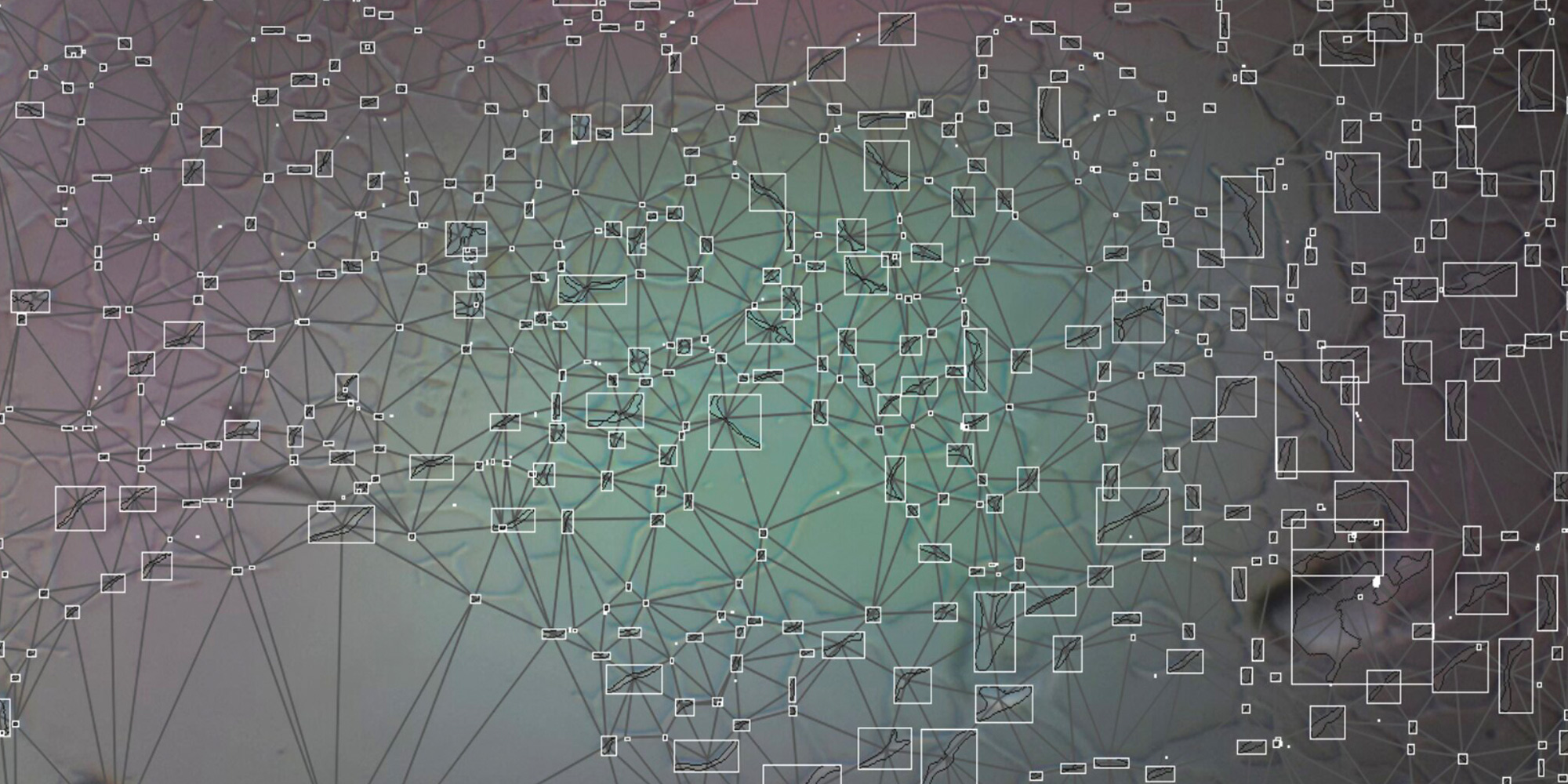Questions around artificial intelligence, transdisciplinary work, unusual scientific approaches – the European ARTificial Intelligence Lab is dedicated to one of the most current topics of our time. For this purpose, Residencies are announced by Ars Electronica together with partner institutions. The last call for proposals with the SETI Institute called for projects on artificial intelligence that reflect on the beginnings of life and critically reflect our anthropocentric worldview. Found was “Interspecifics“, an independent artistic research studio established in Mexico City. The result of this residency will be presented for the first time at this year’s Ars Electronica Festival.

You describe yourself as a “nomadic multispecies collectivity experimenting in the intersection between art and science”. Please tell us a bit about the collective and your work.
Interspecifics: Interspecifics was founded in 2013 by Paloma Lopez and Leslie García in Mexico City. From the beginning, we decided to adopt an artistic research bureau model to explore the different phenomena that interweave reality. To achieve this, we make use of Open technologies that we complement with our developments. We have worked with biological phenomena from bacterial microbiology to neurology. During these eight years of operation, we have given workshops in an experimental education format worldwide. In one of these workshops, we met Emmanuel Anguiano (bioengineer) and Felipe Rebolledo (architect), who later joined the collective. Carles Tardio Pi joined as a scientific advisor from a physics and mathematics applied to code, and then Maro Pebo from the microbiology side. The most recent members are Nick Klinworth working on the visual part of the projects, and Alfredo Lozano as a Machine Learning engineer. We also acknowledge all the organisms we have worked with as part of the collective, as much as the human members: Escherichia Coli, Shewanella Oneidensis, Paenibacillus Vortex, Geobacter Metallireducens, Physarum Polycephalum, Euglena Mutabiliis, etc. Hence we consider ourselves a multi-species and multidisciplinary entity. Our portfolio is available at interspecifics.cc/work/

Give us an insight into the winning project “Codex virtualis”.
Interspecifics: Codex Virtualis_Genesis is an AI-art-science research framework oriented towards the image synthesis of an open-ended taxonomic collection of new-to-nature speculative life forms. The two main dynamic inputs fed into and orchestrated by our artificial generative system come from microscopic and cellular automata simulation data bases. In this sense, within the core of this project lies the exploration of morphogenetic visual patterns that inhabit halfway the biological and the algorithmic life domains.
In a broader metaphorical sense, the AI generative models used in the workflow of our multi-layered computational ecosystem can be considered analogous to the role of evolution within biology. In this process, a change in the gene pool of a population (genotype expression) can produce a continuous stream of novel organisms (phenotype selection). Similarly, by using in silico evolutionary architectures, we explore different algorithmic recipes under which the biological concepts of variation, heredity, fusion, and cooperation can aesthetically manifest themselves and lead to de novo hybrid morphological profiles.
One of the fundamental processes adopted within our system is the mixed training of our generative adversarial networks (GAN). In this task, two qualitatively different datasets merge by domain machine learning strategies, leading to the emergence of new visual samples. These bimodal architectures allow us to explicitly represent an information transfer between domains, analogous to the horizontal gene transfer mechanisms in biology. The latter being an increasingly acknowledged relevant source of evolutionary novelty due to genome acquisition, mutualistic interactions, and synergy between organisms.
What is your interest in artificial intelligence and why is it important to deal with it right now?
Interspecifics: Our interest in artificial systems arose a few years back when engaging with the observer’s effect, a well-studied factor in physics where the observer continuously influences the phenomena he observes. We began to look for technological tools that would allow for another point of observation, in this case, a virtual one, to keep ourselves out of the picture. It started with pattern-recognition machine learning algorithms that started learning more specialized tasks.
Artificial intelligence, in this case, acts as a meta-researcher, helping us find patterns and identify emergencies at different levels of phenomena. Over time, we have positioned it as a creative agent, capable of producing subjectivity. Especially within ecosystemic generative strategies when expressing self-emergency on its own.
Like with any other technology, it is our responsibility to understand the effects every particular use of AI is specifically exerting on our cultures and societies. That is why it is crucial to propose experimental scenarios to seek meaning beyond the pragmatic aspects of technology.
How can we imagine the residency itself? What outcome do you expect?
Interspecifics: The residency so far has been a space for posing many questions and surprises. We’ve maintained a work rhythm that includes specific sessions for code topics, neural networks, machine learning, the implementation of the system architecture, and, of course, on the particularities of the study strategies of symbiosis in bioinformatics. Each member of the collective brings different perspectives and skills that add up to our research. All this allows us to test as we go, and after each session, we all go back with specific tasks. We try to apply agile development models to build the project in blocks. The research process runs permanently, providing readings and references from philosophy, science, and cultural aspects.
What are you looking forward to in particular about this residency?
Interspecifics: We are very interested in the opportunity for dialogue with experts in areas such as astrobiology, genomics, artificial intelligence, agent-based, and cellular automata modeling. These exchange spaces bring new perspectives to team structures like ours. For us, it is an opportunity for learning and generating knowledge to continue exploring questions together, in this case, about what we define as life and about how symbiosis could also be an emergent process at the computational level.
The European ARTificial Intelligence Lab is co-funded by the Creative Europe Programme of the European Union and the Austrian Federal Ministry for Arts, Culture, Civil Service and Sport.
